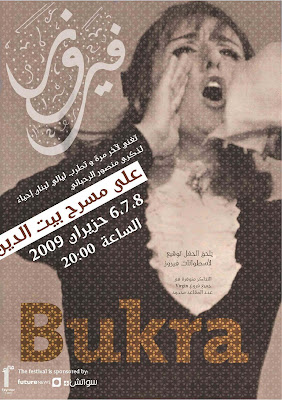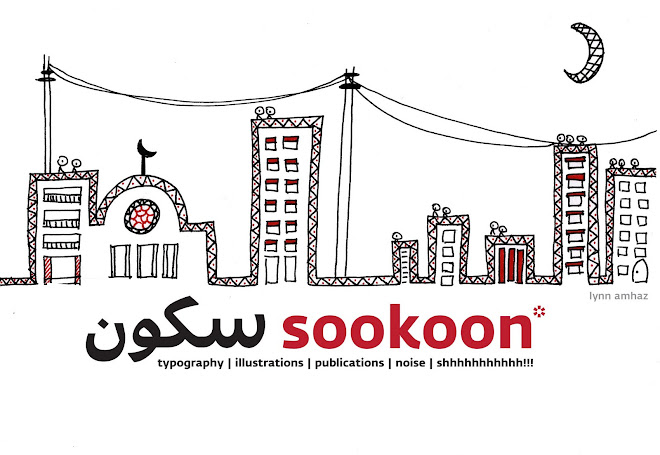Sunday, July 22, 2012
Wednesday, February 23, 2011
Mapping for tourists - شمال



A group of 22 artists and designers from the Netherlands, Egypt and the Middle East have met in Amsterdam this summer (Jul-Sep 2010) for a mapping project initiated by the Mediamatic foundation.
Images by Khajag Apelian
Saturday, April 10, 2010
Workshop led by Titus Ackerman Organised with Samandal
Friday, April 09, 2010
Beirut architectural guide: workshop led by Paolo Tassinari





An architectural guide to Beirut city, a group of senior graphic designers at LAU in March 2009 met with an Italian designer, Paolo Tassinari, working all together to design a publication of the multiple facets of beautiful Beirut. I worked on 3 spreads presenting the old light house, also known as Manara. In addition to that, we worked on the design of the table of contents, the impositions, the cover, the navigation system and the binding, to finally assemble all the students’ work in a coherent and consistent publication.
Fayrouz sequential posters



A series of 3 sequential posters that convey the feel of a modern Fayrouz, all for a same event, the first in Arabic, the second in Latin and the third in both Arabic and Latin. The grid used in the posters is very modern, the typefaces as well, the only elements that refresh the idea of Fayrouz are her old pictures, her name in calligraphy and the arabesque pattern all over the posters. Images were taken from old LP’s of Fayrouz.
Thursday, April 08, 2010
Culture'L catalogue
Sookoon soft cover book





Sookoon, a book that explores the musicality of the Arabic script, the rhythm, the levels, the curvatures and the melodious flow of the letterforms. It also exposes my experiments with calligraphy and the reforms in Arabic typography.
Vignelli once said, “A good typographer always has a sensibility about the distance between the letters. We think typography is black and white. Typography is really white. It’s not even black. It is the space between the blacks that really makes it. In essence, it’s like music. It’s not the notes. It’s the space between the notes that makes the music.” It’s the silence.
Full stop magazine






A bilingual magazine exposing the grid whilst comparing the different elements and choices a designer would make to optically balance the two scripts. The magazine article is a summary of my thesis, it also includes a profile of the Lebanese calligrapher Samir Sayegh, and an “I LOVE ARABIC TYPE” T-shirt.
Sela: the modern revival










Sela is a digital typeface based on the Naskhi script, reviving different characteristics specific to Diwani and Thuluth, i.e. Classic vs. Modern. The edge I propose is the respect of “musicality” of the script, translated through the variations of the letterforms, the swashes, the ligatures the contrast of the pen flow, the marrying of letters with each other, along with diacritical and vocalization marks.
My typeface is based on a specific grid that I created in order to fit the modern and technical criterion. The letters have multiple heights unfolding from a baseline. However the font follows Ibn Muqla’s calligraphic systems to revive the traditional feel of Arabic calligraphy: Nizam Al Dai’ra for the overall cast, Nizam Al Nuqat for the proportions of the face, and Nizam Al Tashabuh for the uniformity of the letters.
Rakwe: Kitchen font
Wednesday, March 10, 2010
Diacritics fanzine



A cheaply produced, hand- made fanzine that explores the musicality of the Arabic script, its relation to dance, the different voices of traditional and modern typefaces, among different concepts and experiments: Punchcutting with potatoes, letterforms in relation to hand movements in dance, font advertising, writing while listening to music.
A postcard is included as a souvenir.
Subscribe to:
Comments (Atom)

















